You've probably noticed that bikes have changed a lot over the last few years, and mostly for the better. The drivetrains we're using, suspension design, our wheels and tires, and modern geometry are all letting us go faster, be more comfortable, and even have more confidence than we sometimes deserve. And this doesn't only apply to long-travel bikes, either, with the capabilities of cross-country and trail machines merging and far exceeding what was expected of them only a short time ago.
While most of us can agree that components have improved over the years, things are a little fuzzier when it comes to geometry, especially when talking about the average mountain biker who isn't trying to imitate what they see at the FEST Series or racing at EWS events all around the globe.
You may do that, or may want to do that, but the average mountain biker doesn't do any of those things. He or she does get out on the singletrack, though, likely on a four or five-inch-travel bike of some kind, or maybe a hardtail, that's at least a few seasons old. And while bikes with extreme numbers like Nicolai's Geometron or the Mondraker Dune might be really interesting and push boundaries, which is important, they have about as much in common with a conventional trail bike as a Group B WRC car shares with my 1990 Mitsubishi Delica van and its broken power-steering pump. In other words, about zero besides the fact that they both have four wheels, and even that's a stretch for my van on some days.
 The Ripley LS is longer and slacker than the standard Ripley.
The Ripley LS is longer and slacker than the standard Ripley.But let's stick to bikes with less travel, something that the average rider can relate to, otherwise known as trail bikes. Is a longer and slacker trail bike better than something with more classic geometry? 'Better' is probably the wrong way to say it, I suppose. After all, some of us like pancakes and some of us prefer waffles (waffle people get into the tub before turning the shower on), and my better might not be your better. Is better faster, or is better more fun? It's the latter for me, but some of you might be waffle people, so there's no right or wrong answer to the question.
So with all that in my head, I had Ibis ship me two large-sized, 120mm-travel Ripleys; one featuring their original geometry, aka the Original Gangster (OG for short) in orange, and the other sporting their new long geometry, aka the LS, in black, to compare how the two perform. After some parts swapping, both ended up with the same suspension fork, shock, same wheels and tires, and the same cockpit dimensions all around for testing*.
 The standard Ripley's frame is all-new, but the conservative geometry is the same
The standard Ripley's frame is all-new, but the conservative geometry is the same*As I'm sure some eager beavers will point out, a few things are different in the pictures. This is due to needing to have both built up simultaneously for the photos.
The Numbers
First, what's different geometry-wise about these two 120mm-travel Ripleys? Not a lot of numbers, to be honest, but the ones that count are different enough. The seat tubes, head tubes, chain stays, standover and bottom bracket height, as well as stack, are all the same or within a few millimeters of each other. The head angles are not, however: a more classic 69.2° is used on the orange OG compared to a contemporary (for the bike's 120mm of travel) 67.5° on the black LS.
Probably more important, however, are the different trail numbers and how they relate to those head angles, with the OG having 85mm of trail and the LS sporting 97mm. What's trail and how does it interact with a bike's head angle?
The rear-end of both bikes measures 442mm, but there is a big difference at the other end of the two Ripleys: the OG's top tube is 607mm long whereas the LS' is 619mm. Reach is also quite different, as you'd expect, at 406mm and 428mm, respectively. This means that the LS Ripley is 42mm longer overall compared to the OG bike, and all of it is up front due to the longer reach and slacker head angle.
I'm not going to argue that any of these numbers are at the extreme end of what's currently acceptable when it comes to geometry - there are much slacker and longer bikes out there - but that's the exact point of this comparison: trail bikes for everyday riders, but both bikes sport relatively conventional yet very different geometry. You know, the same but different.

My Numbers
It turns out that I'm never going to be a great basketball player or need to shop at the local Big and Tall. I'm of average proportions all around, which means that I sometimes need to ask someone to get something off the top shelf, but I don't have any trouble when it comes to finding bikes that fit me well. The one caveat to this is that I have a relatively tall-ish inseam that requires an equally tall seat-to-pedal height. Yes, my dancer's legs just don't quit. No, you don't actually want to see me dance.
• Height: 179cm
• Inseam: 87.5cm
• Ape index: +1
It turns out that I'm never going to be a great basketball player or need to shop at the local Big and Tall. I'm of average proportions all around, which means that I sometimes need to ask someone to get something off the top shelf, but I don't have any trouble when it comes to finding bikes that fit me well. The one caveat to this is that I have a relatively tall-ish inseam that requires an equally tall seat-to-pedal height. Yes, my dancer's legs just don't quit. No, you don't actually want to see me dance.
• Height: 179cm
• Inseam: 87.5cm
• Ape index: +1
 The LS Ripley is 42mm longer, all of it ahead of the bottom bracket shell, and a bit over 1.5-degrees slacker.
The LS Ripley is 42mm longer, all of it ahead of the bottom bracket shell, and a bit over 1.5-degrees slacker.I was busy failing math class the last time I had to deal with this many numbers, so instead let's get to how the steeper, shorter 120mm-travel OG Ripley compares to the slacker, longer 120mm-travel LS Ripley. Both bikes were ridden on the same trails, singletrack that I test all of my review bikes on and trails that I've been riding for twenty years, which certainly gives some extra perspective.
Climbing
Because most people on trail bikes have them so they can pedal up mountains before coming back down, I thought that I should probably do a bunch of exactly that on both Ripleys. The same technical climb was ridden over and over again in the same conditions over a few months' time, but it didn't take nearly that long for me find out which of the two bikes I prefer.
The orange OG is an absolute beast of a bike that can breeze past the tightest, rockiest, rootiest problems on ultra-technical sections with ease. It feels very much like a cross-country race bike that's both more forgiving and has more traction, but it gives nothing away in the efficiency department. On the OG Ripley, a rider can slow to essentially a stop, worm their way around a corner so tight that the bike's rear wheel stays on top of the same few inches of dirt, and then shuffle up a section of trail that has more in common with a spiral staircase than anything a bike should be pointed up.
 The OG Ripley is happy to take the inside, outside, or middle line through any tight climbing corner. The longer LS Ripley requires more thought.
The OG Ripley is happy to take the inside, outside, or middle line through any tight climbing corner. The longer LS Ripley requires more thought.How does the black LS compare? The longer Ripley is an excellent technical climbing machine that makes a lot of other bikes of similar travel look out of their depth, but it ain't the OG. The bike's slow-speed steering actually feels quite similar, surprisingly close, to be honest, which is where its 97mm of trail comes in compared to the OG's steeper head angle and 85mm of trail. Tight switchbacks at slow speeds on the LS aren't ever going to be an issue for this reason - point it where you need to go and turn the pedals over - but it's the bike's extra 42mm of length, all of which is in front of the bottom bracket, that does mean that a rider on the LS Ripley has to do a bit more thinking than if he were on the OG bike.
What I'm getting at is that, while the LS and OG are both quick handling bikes that supply the same amount of traction, I did find myself out of place on the longer LS Ripley more often than when on the OG, simply because of the former's extra length.
 When it comes to janky, tech climbs, both bikes can hold their own.
When it comes to janky, tech climbs, both bikes can hold their own.Both bikes are champs on difficult singletrack climbs, but I know that I cleaned more technical trail on the OG than I did while on its longer, newer brother. Don't have those types of ascents? Then there's really nothing between the two bikes when it comes to climbing.
Descending
Here's where it counts. With 120mm of travel out back and efficient feeling suspension, neither the OG or LS are the kind of bikes that relish fast and rough terrain compared to some of the new-school, short-travel play bikes out there. Neither Ripley is for chubby chasers who happily push around extra heft in exchange for added forgiveness when things get rough, but rather lithe machines that perform at their best when ridden with deliberate exactness instead of pure ballsiness. And, more than anything, you'll find that both are extremely entertaining bikes when this is your approach.
If you had the chance to ride both the OG and LS Ripleys back to back, you'd find that the handful of millimeters that separate them also makes all the difference in the world.
 It's easier to go faster aboard the LS Ripley, while the OG bike wants to play 24/7.
It's easier to go faster aboard the LS Ripley, while the OG bike wants to play 24/7.Trails that invite different interpretations are where the shorter, steeper OG Ripley was clearly ahead, or at least it will be to a rider who looks at singletrack and thinks, ''where can I go that's different than the line the person in front of me chose?'' The orange Ibis fits into places where other bikes, including its longer sibling, would prefer to go straight through rather than into and out of. The OG can be pumped and popped where the LS is plowing and pushing, relatively speaking given the 120mm of travel. While neither approach is right or wrong, a rider more apt to employ the latter could find the OG Ripley to feel a bit nervous. I love a sharp handling bike, though, so I'd say that the OG's steering is more decisive and on-point in a positive way, even if someone with the opposite preference might call it a bit jittery.
One thing is for sure; the OG doesn't tend to push to the outer edges of the trail through a corner. Just the opposite, in fact, which might be why I tended to find more fun line variations because I could cut in or under the accepted blue groove and choose something different. And the slower the switchback, the more the OG is going to brag about its so-called passé geometry while making you look like you know what you're doing.
 The OG Ripley can be picked up off the ground at ease, and it fits into the smallest of pumpers and rollers on the trail.
The OG Ripley can be picked up off the ground at ease, and it fits into the smallest of pumpers and rollers on the trail.While the two bikes ride differently, it's only when the trail gets really fast and rough that the LS starts to pull ahead when talking about comfort, and maybe even speed. The bike's longer wheelbase sometimes makes it feel as if the LS is sporting an extra 10mm of travel, and it's obvious that, along with its more relaxed handling, the LS is going to allow a rider to feel more at ease than when he's trying to go the same speed on the OG Ripley. It simply feels more surefooted, especially when the ground is wet or loose, and I had more confidence and felt farther away from the edge of control when on the black bike. But, for where I ride, this makes up a small portion of my saddle time. Given that both bikes share the same suspension, wheels and tires, and cockpit measurements, this is solely down to the difference in geometry between the two - 42mm of length, 12mm of trail, and a bit more than 1.5° up front.
OG or LS?
Pancakes, of course, and the OG Ripley with its shorter, steeper geometry.
Both bikes are equally capable - skill is what matters, after all - but the OG and LS Ripleys also perform differently enough to warrant matching the bike to your terrain and style. The good thing is that we do get to choose these days, and I'm not just talking about these two Ripleys. In many cases, travel no longer defines a bike's intentions and personality, but rather its geometry. You can pick up a short-travel bike that thrives in the bike park, or a long-travel bike that pedals like a demon and turns on a dime and vice versa.
I know that it's expected of me to say that I preferred riding the bike that I felt faster on, which is the longer LS Ripley, but I found myself having more fun on the shorter, quicker handling orange bike. For where and how I ride, the OG Ripley is more enjoyable to be on; I was more likely to take creative lines on the shorter bike, and I was also more likely to be hooting and hollering as a result. That makes it pretty clear for me, but the LS might be just the ticket for you if your terrain calls for it or if you chase your riding buddies who are on long-travel bikes. After all, I know that some of you out there do prefer waffles.

About the Reviewer
Age: 35 • Height: 5'10” • Inseam: 33" • Weight: 165lb • Industry affiliations / sponsors: None • Instagram: killed_by_death
Mike Levy spent most of the 90s and early 2000s racing downhill bikes and building ill-considered jumps in the woods of British Columbia before realizing that bikes could also be pedaled for hours on end to get to some pretty cool places. These days he spends most of his time doing exactly that, preferring to ride test bikes way out in the local hills rather than any bike park. Over ten years as a professional mechanic before making the move to Pinkbike means that his enthusiasm for two wheels extends beyond simply riding on them, and his appreciation for all things technical is an attribute that meshes nicely with his role of Technical Editor at Pinkbike.
Age: 35 • Height: 5'10” • Inseam: 33" • Weight: 165lb • Industry affiliations / sponsors: None • Instagram: killed_by_death
Mike Levy spent most of the 90s and early 2000s racing downhill bikes and building ill-considered jumps in the woods of British Columbia before realizing that bikes could also be pedaled for hours on end to get to some pretty cool places. These days he spends most of his time doing exactly that, preferring to ride test bikes way out in the local hills rather than any bike park. Over ten years as a professional mechanic before making the move to Pinkbike means that his enthusiasm for two wheels extends beyond simply riding on them, and his appreciation for all things technical is an attribute that meshes nicely with his role of Technical Editor at Pinkbike.
Author Info:
Must Read This Week
Sign Up for the Pinkbike Newsletter - All the Biggest, Most Interesting Stories in your Inbox
PB Newsletter Signup
-
About Us
Contacts FAQ Terms of Use Privacy Policy Sign Up! Sitemap -
Advertise
Advertising -
Cool Features
Submit a Story Product Photos Videos Privacy Request -
RSS
Pinkbike RSS Pinkbike Twitter Pinkbike Facebook Pinkbike Youtube Pinkbike Instagram
Newsletter Signup
Copyright © 2000 - 2024. Pinkbike.com. All rights reserved.
dv56 0.128561
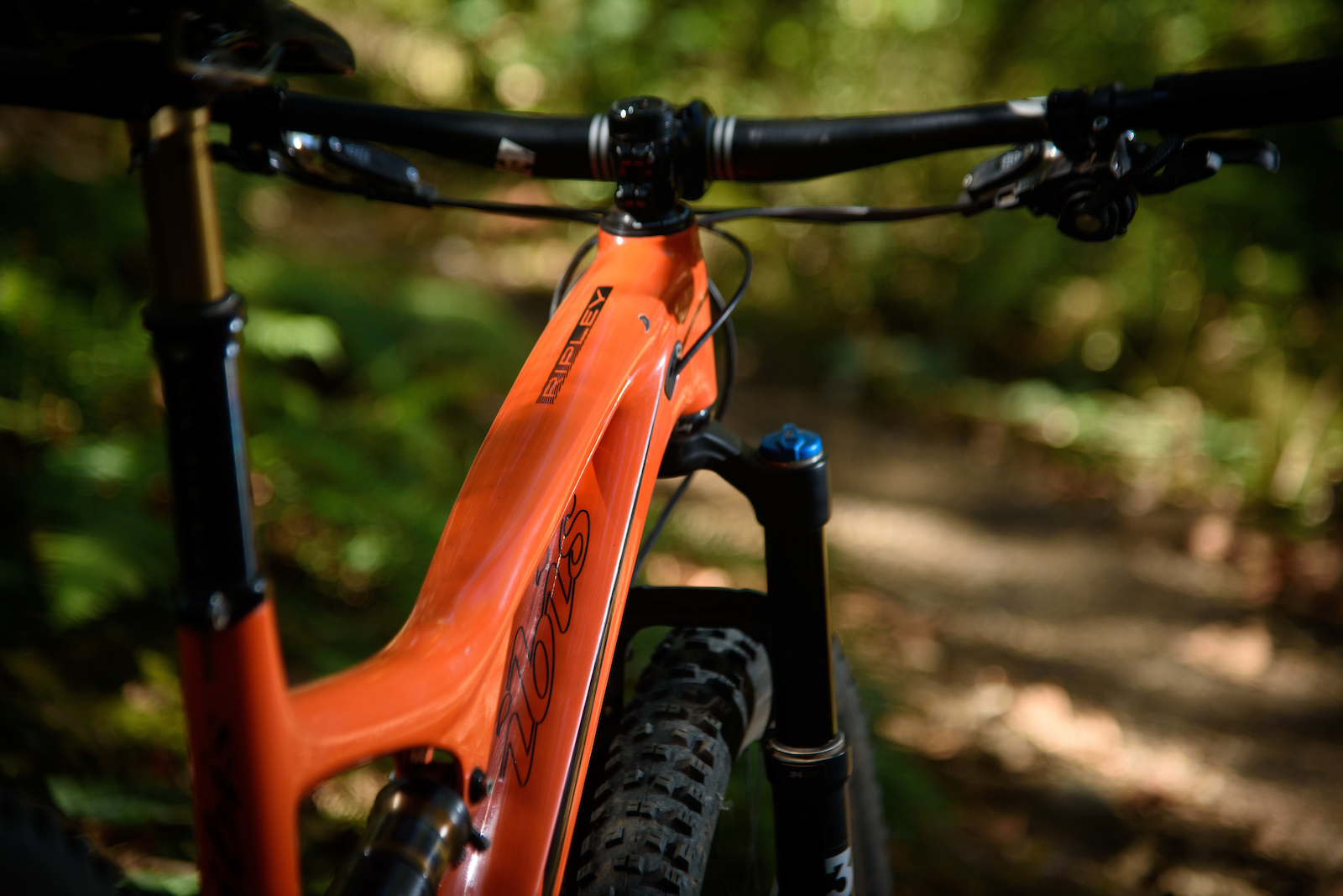
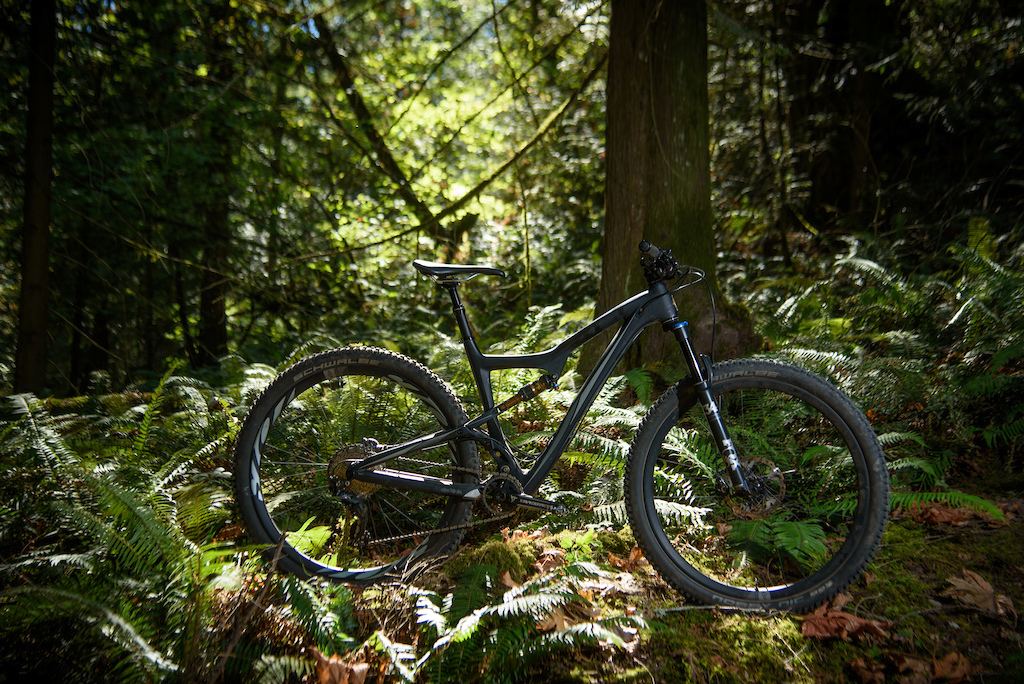
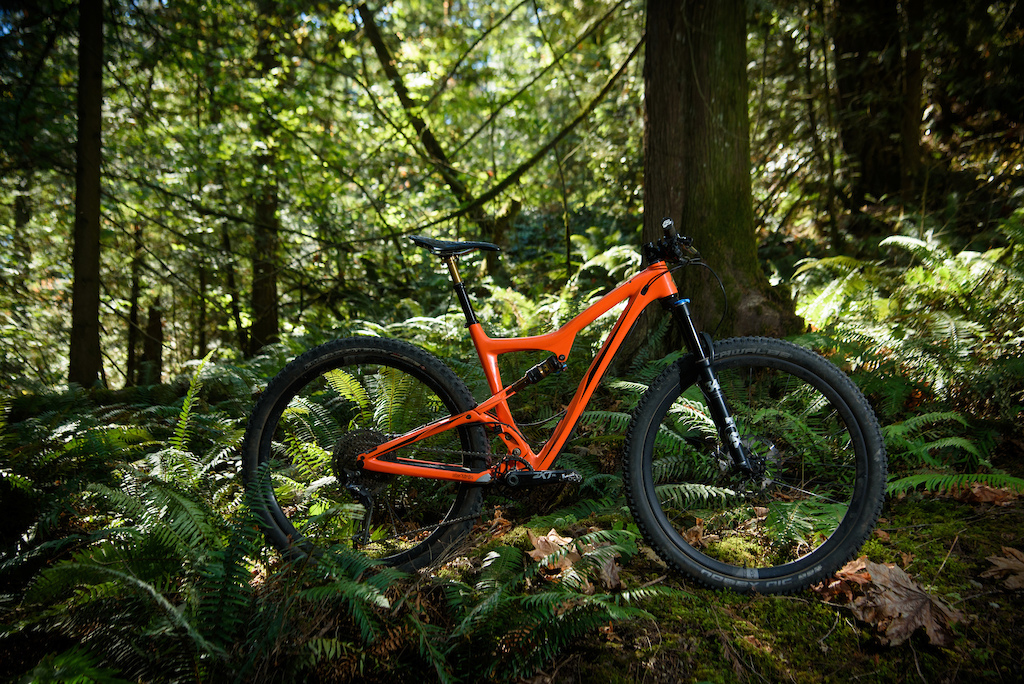

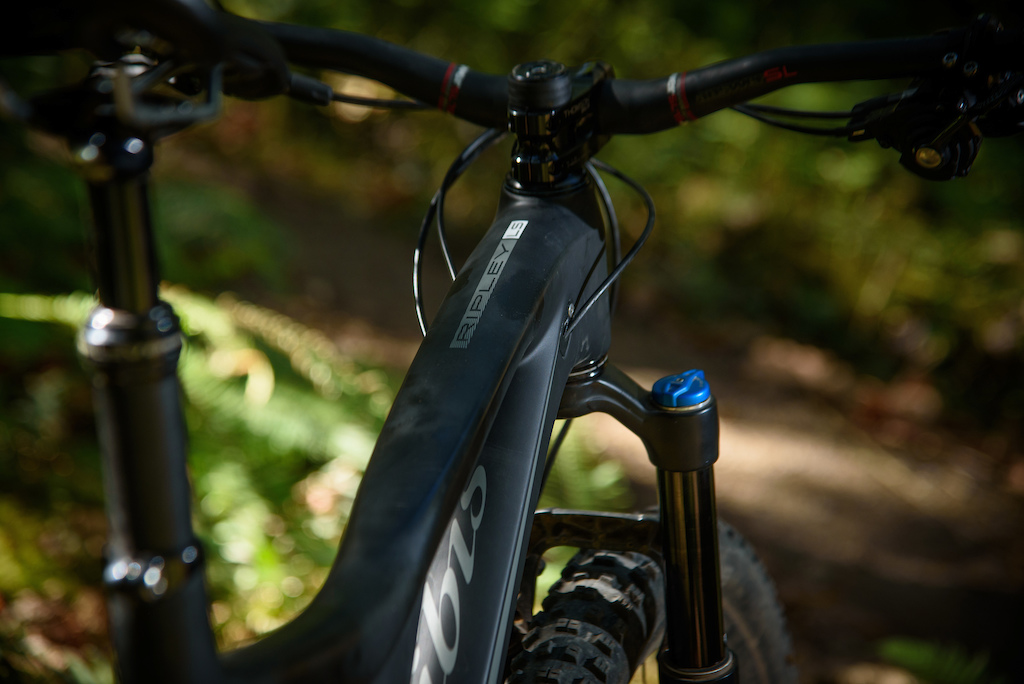
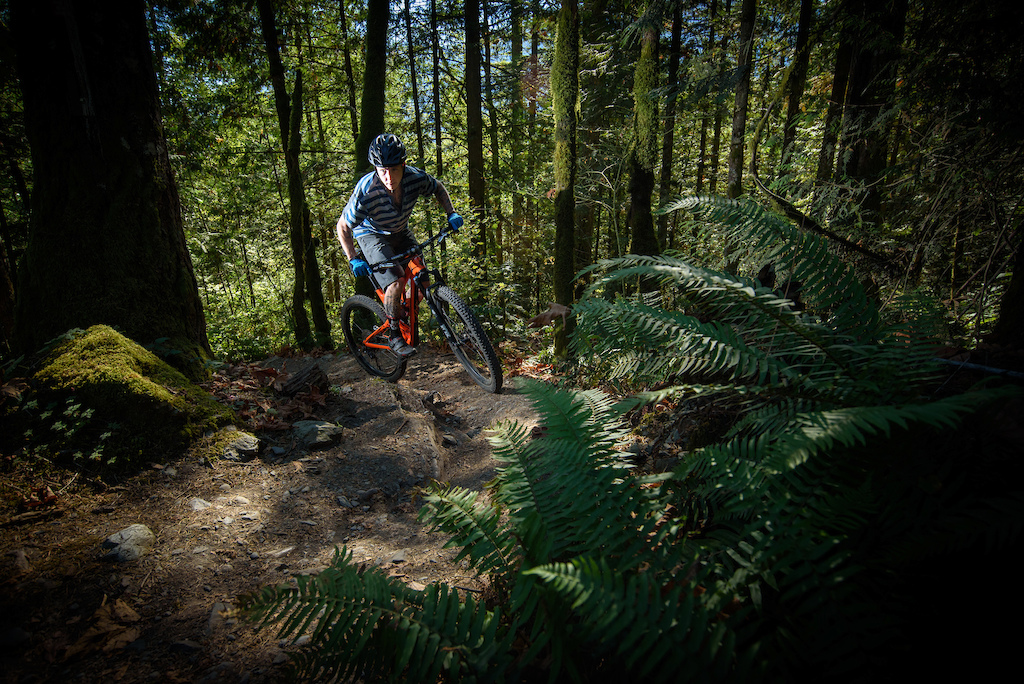
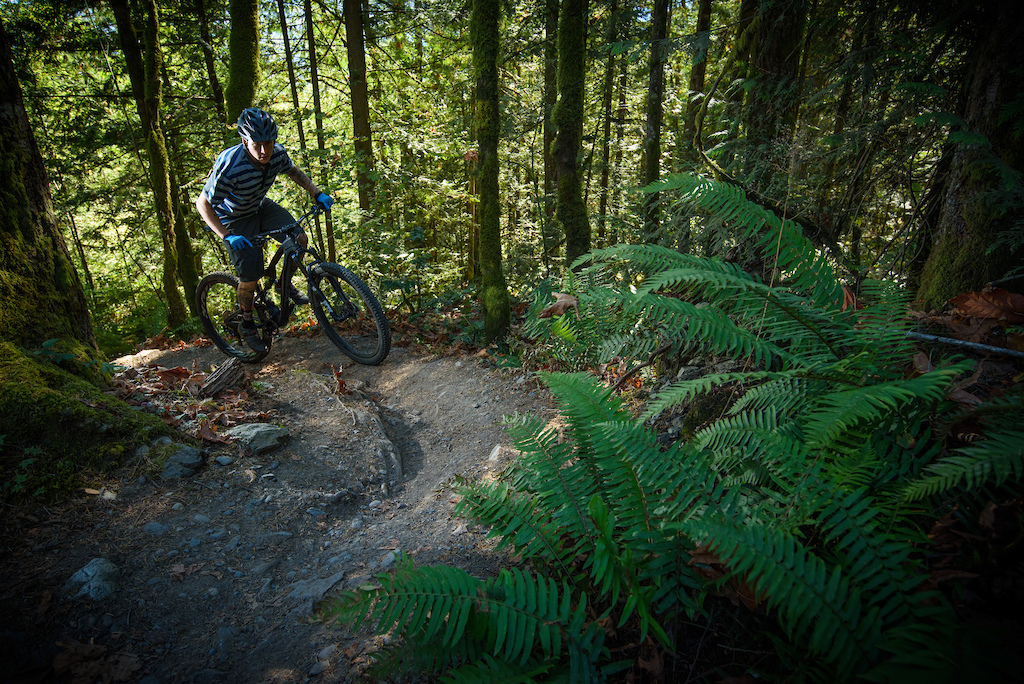
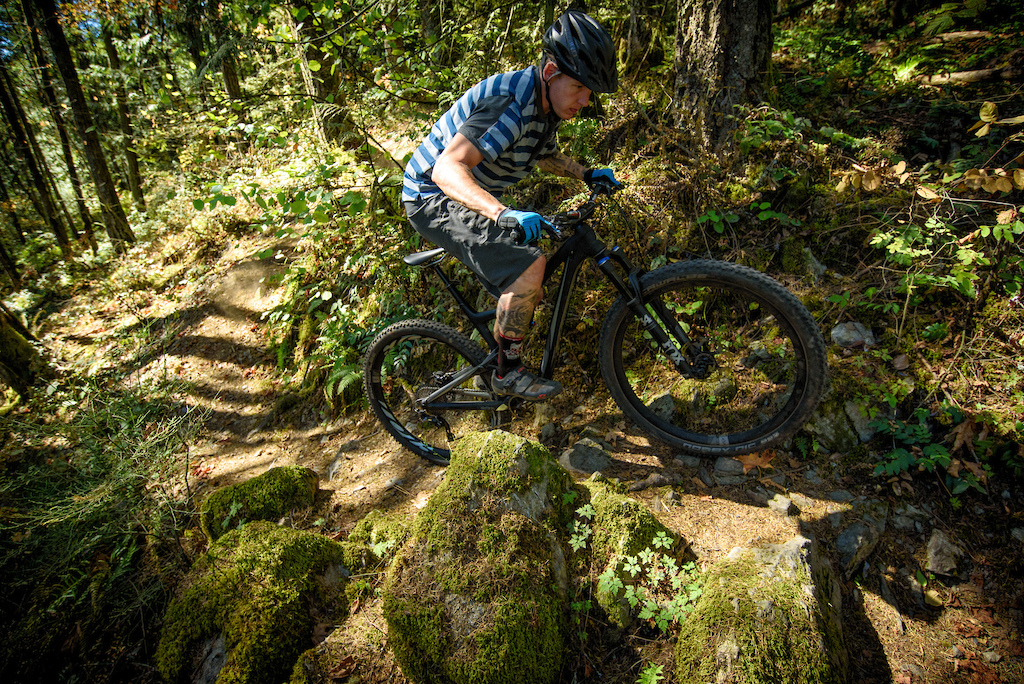
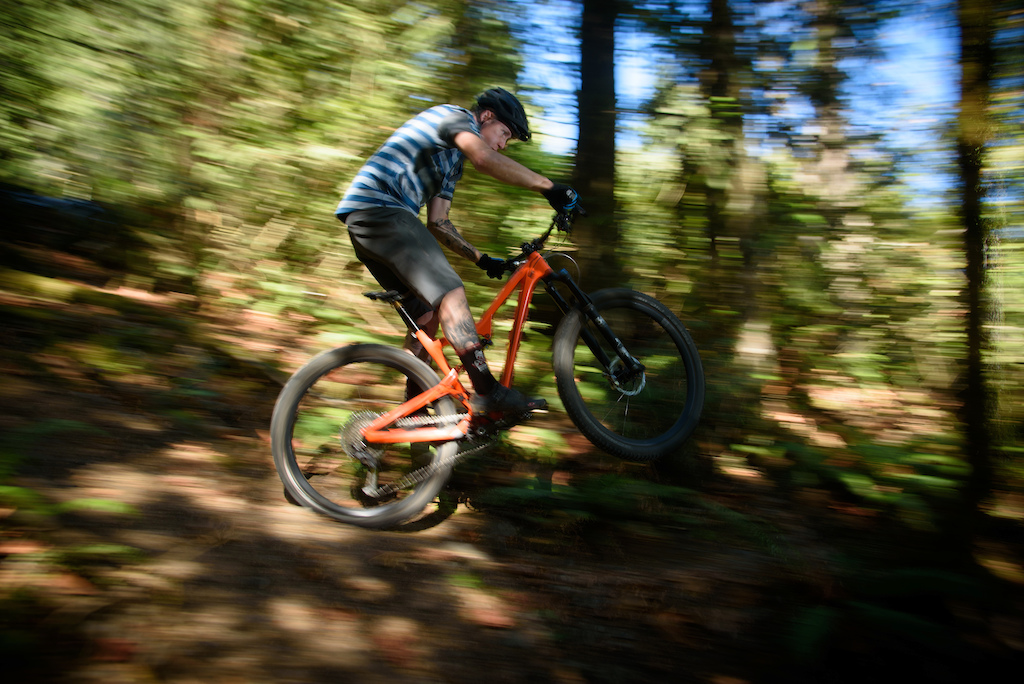

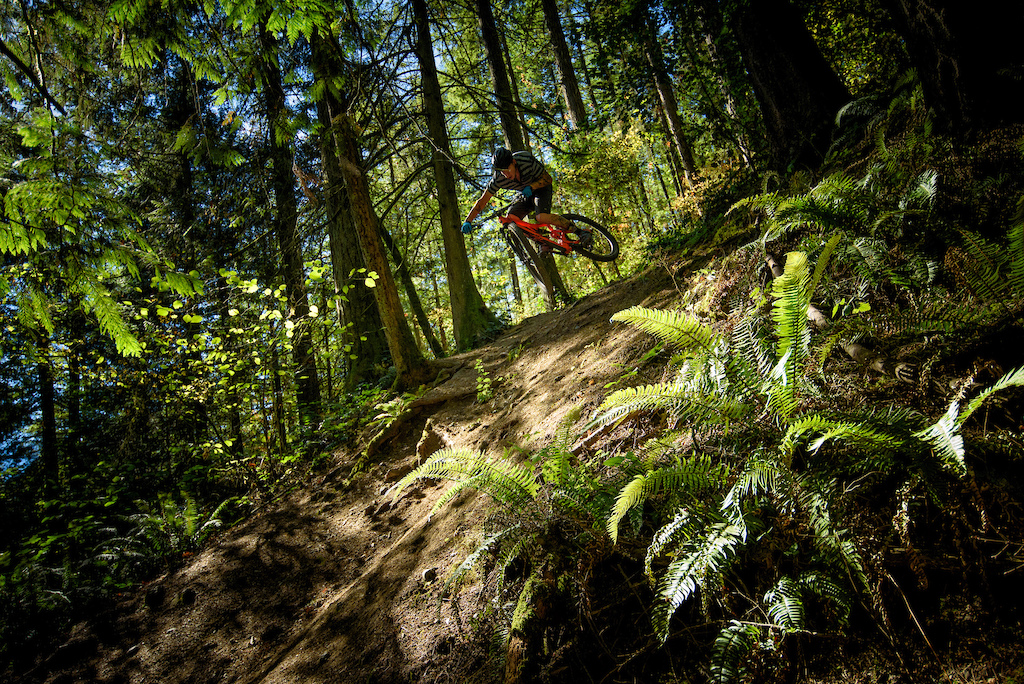

I believe it's time for manufacturers and consumers to take a hard look at dynamic, adaptive-geometry systems, like that of Bionicon. It's easy for a rider to be satisfied with a well-rounded geometry that fits his or her preference, and it's also easy to be tempted by improvement to suspension and drivetrains (the low-hanging fruit, in my opinion, of bicycle design). I don't question the potential of exciting innovations like Live Valve, Missing Link, or gearboxes. However, so long as trailbikes are unable to adapt their ride characteristics to suit a given moment's terrain, we will always be forced to choose between OG and LG, so to speak, and so our machines will necessarily be compromised. Call me an evangelist - I think adaptive geometry is the next step in our sport's evolution, and that which will most benefit the common rider.
Bikes should be designed for the intended use, aiming for specific ride characteristics, regardless of what is the current flavour. A 65 deg head angle maybe in fashion this year, but you shouldn't start designing from a single measurement.
I don't believe in adjustable geometry, it just doesn't suit my trails and the way I ride. A carefully designed and spec'ed allrounder always seems like a better solution in my eyes. The human body is very adjustable and can mostly compensate for the compromises of an allround trail bike.
Anything more that, seems like a lot of ground to cover with one bike.
Mike's suggestion that a conservatively numbered (geo, travel) trail bike, coupled with some skill, may actually work best for most riders - brilliant!
His comments are so spot on, and rightfully challenge the runaway trend of the more is better mentality. Wake up all you PB dudes - you ain't never gonna be a sponsored Enduro racer.
Can we have more reviews like this?
Personally, I like geo that's short, slack, and low.
Oh, and Ibis has incredible customer service!
Don't you know we are on Pink Bike?
Seriously though, I always snicker when people say " I live for the downhill". If so then why are they riding bikes that takes so long to pedal uphill, only to make the descents go by so much faster? If you ask me they are living for the uphill.
Don't get me wrong I dig down hill, and have a downhill bike, and downhill ride as much as I trail ride. But there is a place for everything. And trail riding is what it is. Let's not fool ourselves into thinking trail riding is downhilling.
I ride fast flowy XC trails and I'm a very typical medium at 5'8" with the same wingspan and a 30" cycling inseam. Recently built a new Honzo CR in medium and even with a 32mm stem, it's too long. Seat slammed forward creates a less than ideal pedaling position and I struggle to get the weight on the front - not confidence inspiring. I think it was Mike who commented on the lack of adjustability on the CR with such a long TT and reach... I may have been happier with a small but the medium was recommended. This wasn't my first rodeo with long and slack - a Smuggler preceded the CR.
So I appreciate the dose of reality that Mike offers in this article. I needed that as look to move on from the CR. And good on Ibis for offering both options - I look forward to testing both at Cyclefest next month.
I like 'longer' bikes and I am the same height as you, but longer to me is around 445 reach - The frame I have now at 5,8" is a large with a 455mm reach as standard but as I am running a 1.5 degree angle headset and a 20mm longer fork than the geometry is calculated with my actual reach is probably more like 435-440mm which I find fine.
This is another case of the cycling industry expecting the customer to be the expert and research geometry and what the numbers mean before choosing a size - It should not be like that and should be better explained. I remember commenting on a guy with a Commencal who chose a large but at over 6 foot it was still tiny - This is not acceptable, not everyone who rides a bike is a nerd who pours over geometry charts and can understand what it all means.
At 5"8 you should be bang on a Medium, at 6 foot then you expect the largest size on offer to fit. I know all riders have a different preference but sizing needs to become easier to understand for the non pinkbike uber bike nerd.
However, I've never ridden any Ripley prior to my purchase so I can't tell you how they all compare. I've made my purchase base on forum comparisons similar to this article.
I demo a Specialized Epic S-Works (regular, non WC) right before the purchase, and that bike felt slightly faster and sharper if my memory serves me right. However, the Ripley is only slower by a hair, almost just as sharp handling, and waaaaay more capable.
As you suggest, being 5'8" with ape index of 0 I should be squarely on a medium. It's all I've ridden since I've been MTB on and off for 24 years.
I think that Kona did great things with the Process geometry and forced other manufacturers to think differently. That being said, I think they have gone too extreme with the new geos. With the new super long front ends, the WBs are insane (for a HT) and almost negates the benefits of the short CS. Very possible that I may feel differently if I was on a small but as Racer951 suggests, this new approach to geo only adds more confusion to an already confused marketplace.
I'm not complaining as I knew I was on the fence with sizing this frame but it was an unsuccessful experiment. And this article was a good piece of humble pie for me to not get all caught up in the latest and greatest...
A confusing world if you are just getting into this level of biking, hopefully local shops have staff that want to help rather than just take a sale but who knows.
You mention it was an experiment as you knew you were on the fence with it but imagine if you had no idea about geometry or sizing and were new to the game - You would immediately think Medium at our height, this length of bike would be even worse for a beginner too.
As I say, I am a fan of long bikes so I am not moaning about their existance, my gripe is with manufacturers having completely off the wall sizing reccomendations for frames and just how different sizing is between different manufacturers.
Oh - thought about a reach adjust headset to help with things? - Also try raising the front end a little if possible without screwing your riding position too much.
I test rode an Ibis, and to me it was way to short. I'm guessing for your build, it would be great.
I'm starting to think that the whole "fit the bike to the trails" thing is really secondary to "fit the bike to the rider" - my wife wouldn't be very happy on a longer bike, because she has relatively long legs/short torso - so she's more in the same boat as you are. I see people ripping on all kinds of trails, with all kinds of different bikes - but the key thing seems to be that anyone who rides well usually is on a bike that fits their body type.
I'd love if in these reviews, we were told not only what the tester's specs are (that's a great start), but also what they've generally learned about how different bike fit paradigms seem to work for them.
Does that mean the new enduro isnt suitable for taller riders in any size, of course not, but it wont offer stretched 'modern' geometry if you are tall.
I am enjoying the recent developmens in Geo but it isnt half making it difficult for people to size bikes correctly unless they are full bike geeks.
I'm also looking at a specialized Fuse Carbon in an XL, fairly similar bike to the Honzo but with 27.5+ tires with the option of running 29" wheels/tires. The specialized is actually a nicer build for $100 less...
First, was totally surprised that Scot Nicol was working the Ibis demo. 9 out of 10 people had no idea who he was... He seemed stoked that I wanted to try both Ripley's and when I mentioned this article, he chuckled and mentioned it has more people interested in demoing the OG. I was one of those people thanks to Mike Levy. Interesting stat: OG only accounts for 20% of current Ripley sales according to Scot.
I picked a varied 3+ mile to test all three bikes that actually was very representative of my terrain. Loved both Ripley's and could own either but my money will be going to the OG. It proved to me that hours of staring at numbers on a spreadsheet is only so good. You have to ride them - simple as that. I just got rid of a Smuggler and have a Honzo CR so I get long and slack but I definitely preferred the precision handling of the OG. Not sure I would have demo'd the OG if not for this article...
SC Tallboy is a great bike and I could certainly own one. If the Ripley didn't exist...
And some random thoughts after attending a large cycling event for the first time in a few years... I was surprised at how many people demoing bikes completely ignore the 45 min requested demo time. Lot's of DBs in this regard. eBikes everywhere - sucks. And is just me or do the folks from ebike-only companies seem to give two f**ks about cycling? Most come across as profit pirates jumping on the latest fad. And it's amazing the service from one demo to the next. Ibis and Santa Cruz was night and day.
The results were pretty much the opposite of what I expected. the 150mm bike climbs much better, and the 134 feels much more stable in chunky conditions. the head angles end up being about the same in the end, I think most of this is due to the difference in reach length (the medium process is still about an inch longer).
I think it all depends on trails, but I've been riding the altitude more, it's a better all-rounder. That said, the process is a more fun bike, and I feel better trying trailside features and pushing my limits on the process. Once I get my fitness up, I'll probably swap back to the process.
So, I guess the tl;dr of this is: short and steep can be more useful, but there's credence to the long and slack design. It's fun as hell and inspires confidence. Test ride everything if you can, because there's only so much you can glean from numbers on a website
Any comparisons to The Following? That is my current ride and I'm having a slight identity crisis, I love The Following but I'm signed up for the BCBR next year and part of me thinks I should get a slightly more "XCish" bike. The Ripley LS is one of the few bikes on my radar.
I may get myself a custom 29" HT made. 1250 wheelbase with 460 stays, 77 seat angle, 66 head angle with 120 fork. 35mm stem, 800 bars, 30mm internal width carbon rims, 200mm dropper compatible. Plus compatible. Just go crazy with it.
Personally I wouldn't buy a bike just for BCBR as it's expensive enough as it is!
But.....I really like it! Sure, the seat tube angle could be a bit steeper and / or lengthen the top tube a bit but the general handling of the bike on the North Shore at least is great. It's easy to load either wheel depending on the scenario, easy to pop the front wheel up / over stuff, stable yet accurate on slow techy terrain and I'm not smashing my chainring on every rock on the trail.Only the weight of the bike (LOL etc...) really lets it down.
In contrast, I borrowed a modern 'enduro' bike recently and was really looking forward to taking it for a rip but it was a seriously disappointing experience. The bike was just too long, steering vague, pedal / chainring smashes everywhere. I can imagine the experience being akin to driving an Escalade along the Sea To Sky compared to my 1990's Civic. Sure, the douche canoe will be faster in a straight line but the Civic is way more fun and precise.
So longer and slacker is likely faster, does faster even matter except in racing?
The real question is which would be better if had 4 bikes
1/ short steep
2/ short slack
3/long steep
4/ long slack
My preference would be long steep, but that would not be for everyone or all conditions
Consider:
Ripley OG L: reach = 15.98, wheelbase = 44.29
Ripley LS M: reach = 16.18, wheelbase = 44.88
Ripley LS L: reach = 16.85, wheelbase = 45.94
The LS size M is already longer than the OG in size L. Going all the way to the large LS means the bike might not fit properly and Mike's complaints in line with that. Sizing down to M would bring back the quickness of the shorter wheelbase. Other parameters like top tube and seat tube are easily adapted via stem and saddle. Using size M for the LS also allows longer dropper posts.
I'm pretty zeroed in on this difference because I was strongly considering this bike for a while. Originally I was set on the OG L, before the LS came out, but in the LS I would go for the medium with a 60mm stem. 60mm isn't extremely short but it's good for this application. I'd need a 70mm in the OG size large.
The OG Ripley was designed to run with long stems by today's considerations. Sizing it up and running a shorter stem doesn't give a fair picture of old vs. new geometry because it's already bucking the original design intention and gives you a long seat tube... Mike Levy has long lenot everyone will be able to deal with that.
The Ripley LS is not really on the forefront of the long/slack trends, given it's long chainstays and not-steep seat tube angle. Shorter stays on some newer bikes help keep the wheelbase in check.
We need to start incorporating stem length in bike fitting; this is where moving to reach/stack coulda really helped, but didn't.
I've never owned the original Ripley so I can't make a comparison to it, I can say that the LS is an UNBELEIVABLE amount of fun when compared to all other XC bikes I have owned, many of which were very respectable XC bikes. The LS climbs incredibly easy, in any situation, tight, windy, steep, rocky, roots, wet, sand) it handles it ALL with ease. and I can't imagine the original climbing much easier. where this thing shines is descending on tight windy trials with LOTS of rocks and roots. the slack front end Is SOOOOO forgiving and so much more fun than any step angled bikes I've owned. Once I got adjusted to riding a long and slack bike (and yes, there is a bit of a learning curve if your used to riding aggressive XC bikes) I can honestly say it is a much better solution for the average rider than the aggressive geometry. It makes trail riding much more balanced.
Is it possible that the original Ripley might be a better solution for SE MI trails?? possibly, but I'm fairly confident that the steeper front end wouldn't be any different than any other of the bikes that I've owned, which leaves me to believe that it wouldn't be as balanced as the LS I'm riding now. I am fairly confident I would never go back to a steeper more aggressive geometry again
on a side not, My girlfriend, who is a beginner, has a trek fuel ex. it had a 69 degree head angle. I installed a cane creek angle set on to slack it out by a degree and a half. it is amazing to see how much more comfortably she goes down any hill now, which were always very intimidating to her. again, proving to me that the slacker front end tremendously balances out trail riding. for any guys who would like there girls to get more into riding, do yourself a favor, slacken the front end. it's your best chance in keeping her going.
The fact is, Boost is here and there's nothing to do about it. But yea, cheers to Mike for saying it, and respect for being experienced, imaginative and sensible enough to form such statement.
Or we should have gone the french way : everybody on strike until Boost is out!
@mikelevy : thanks for the great article. Mentioning your size is very important, as all this is relative. For example, adding stability to a bike can also be done by lengthening the CS, which in combination with STA is very important for tall riders uphill.
I am a waffle person because you can stuff more good stuff in it.
And utlimately I am looking for long bikes because I want XL length with L ST, so long L in other words. I'm 190cm and short 48cm seat tube is good for bike parks, and I've noticed I'm not the only one. Though I'm the kind of guy who needs a 200mm dropper.
I don't understand using the same length chainstays with varying lengths of front centres except it is cheaper to build.
I am hugely interested how does it look in a big companies, how many specialists do they have. Does Specialized have a major designer per project and then specialists from suspension, ergonomics, structure, materials come and work on it. IT seems that in a small company like UNNO , one or two dudes do everything.
Well, I also have the consolation that I can use my really sweet wheels, and swap them between my hardtail and the Ripley for races and as backup wheels.
Yes I was sour and pixxed off when my 26" frame broke and the replacement came only in 650B, I had to spend 1500$ on new fork, wheels and tyres. But If I was to buy a new bike then I could not be more arsed what axle it has. And nobody normal gives a sht because you can't stop the rain from falling, even if it is a bullsht rain like Boost is.
Like 650b wheels, boost is here to stay.
I think you'd find the OG ripley with a 140mm fork upfront such as a fox 34 or pike is a really good balance on the ripley. I had my original ripley for 2 years and about 1500 dirt miles and it was a brilliant trail bike especially once adding the DBinline. With a 29" bike it seems like we are just pushing the extreme on head angles... 68 is a great all around number for a "trail" bike such as the Salsa horsetheif and OG ripley with 140 fork...
a href="http://www.pinkbike.com/u/mikelevy/blog/fox-34-float-grip-review.html">http://www.pinkbike.com/u/mikelevy/blog/fox-34-float-grip-review.html/a>
Although I want the handling the OG provided, but the "reach" is just too cramp. I sized up, and still able to use 100mm dropper. More than enough for a trail worthy XC bike
I've owned the Ripley OG for over a month now, and I've repeatedly set my PR on Strava. Not because this bike is actually that much faster than my other bikes, but because this bike makes me WANT to go fast. It is a very rewarding bike to ride. And all this just applies to me and the trails that I ride around the U.S. Midwest, and I'm glade that I made the right choice.
At the end of the day, this bike can take an AngleSet if I ever want to go LS, and I also have another longer travel 27.5 bike, so I don't need my Ripley to be "the one bike".
Generally I fully agree with article, however IBIS numbers are odd
having dj background I cannot understand ridiculously high seat tubes and short front end
*not applicable for Knolly bikes because they measure the ett differently than anyone else.
Seat tube angle is another thing which is not that easily comparable between bikes since many have effective angle calculated on bar level which is not the angle you will get when actually pedaling. Another thing is SAG (absolute, not in %) on full sus. So the statement that a bike with steeper SA climbs better is also false by the way ;-)
I am almost 6 ft (183) and ride a large Enduro 29 with 445 reach and I have the strong feeling that I would be better on a XL so I am considering to go one size up in my next bike but on the other side I like the maneuverability of the large and I am afraid that it would be compromised with a longer and slacker bike. And actually I have friend who went from a large Spitfire that was a bit small for him to a XL Mondraker Dune and actually hates it at least after the first rides.
I guess we all have to try both the lower and upper limits of bike geometry before we can make our final decisions. Having said that the Ibis looks extremely short.
I demo'd one and was pretty blown away by how fun and capable it was